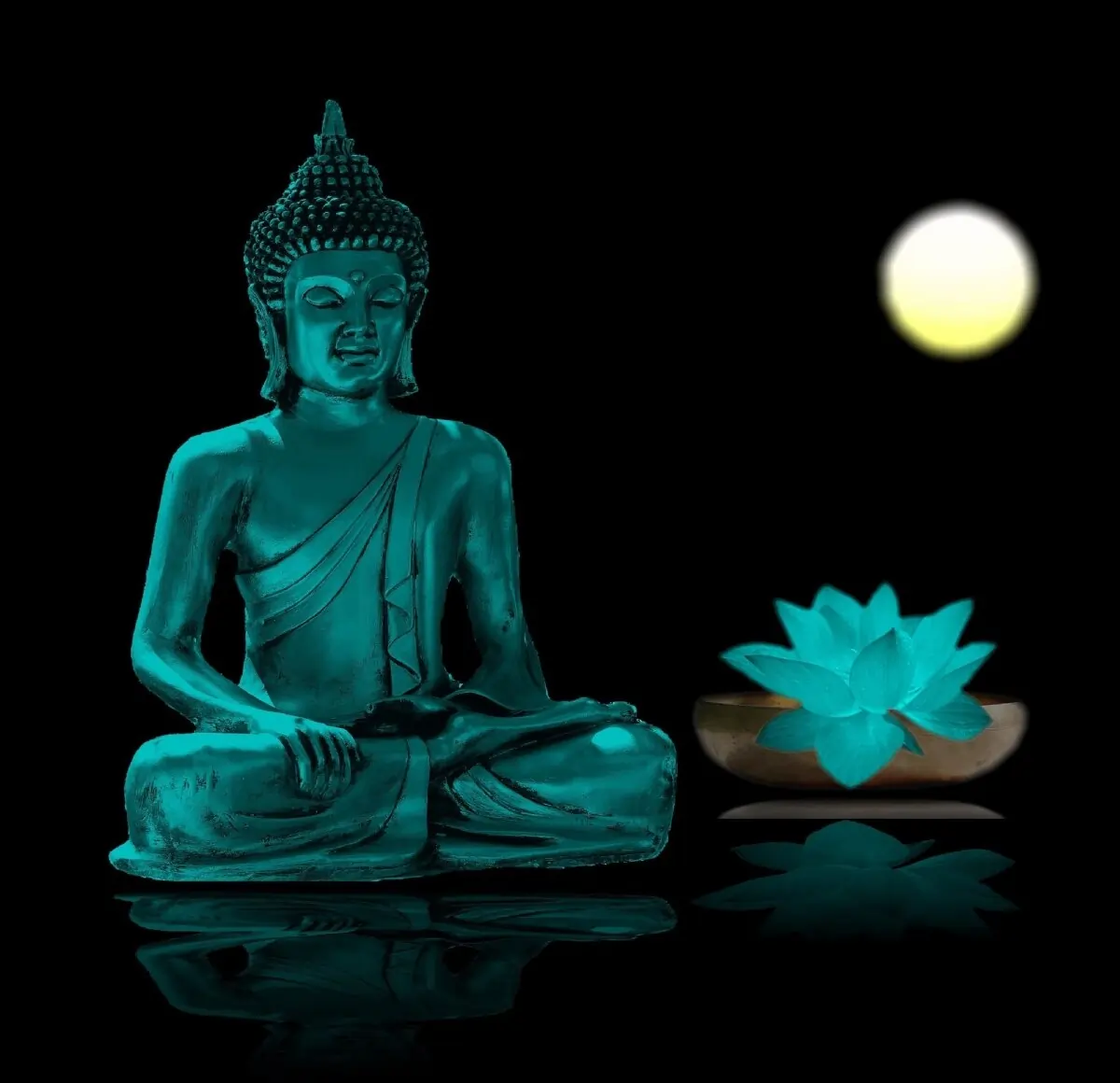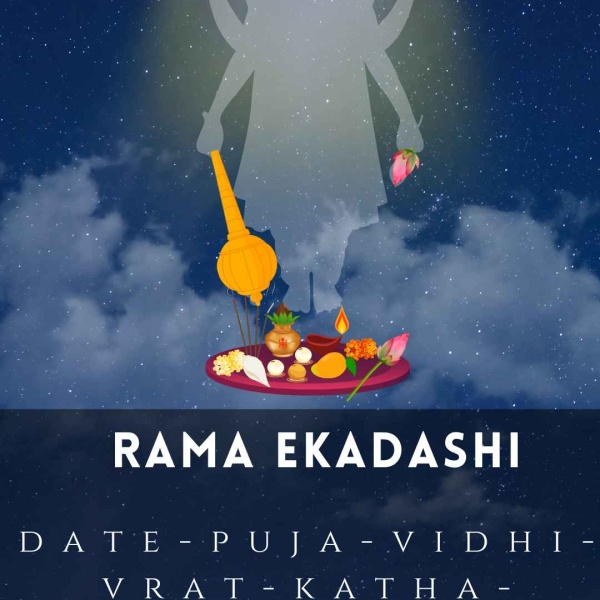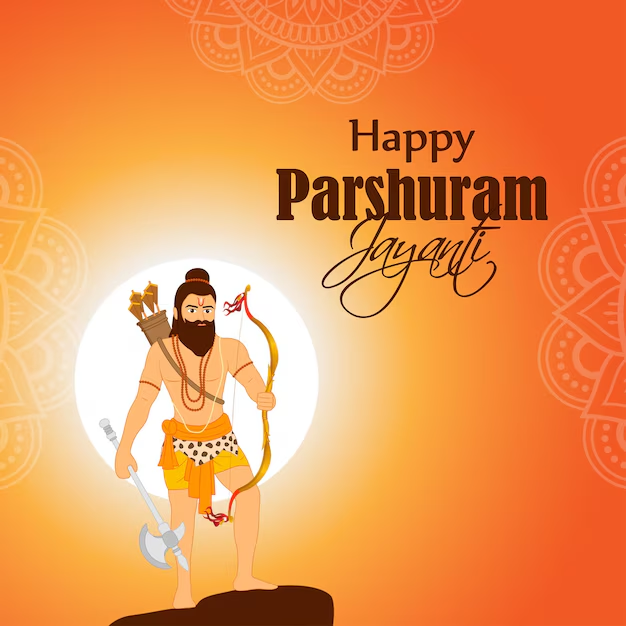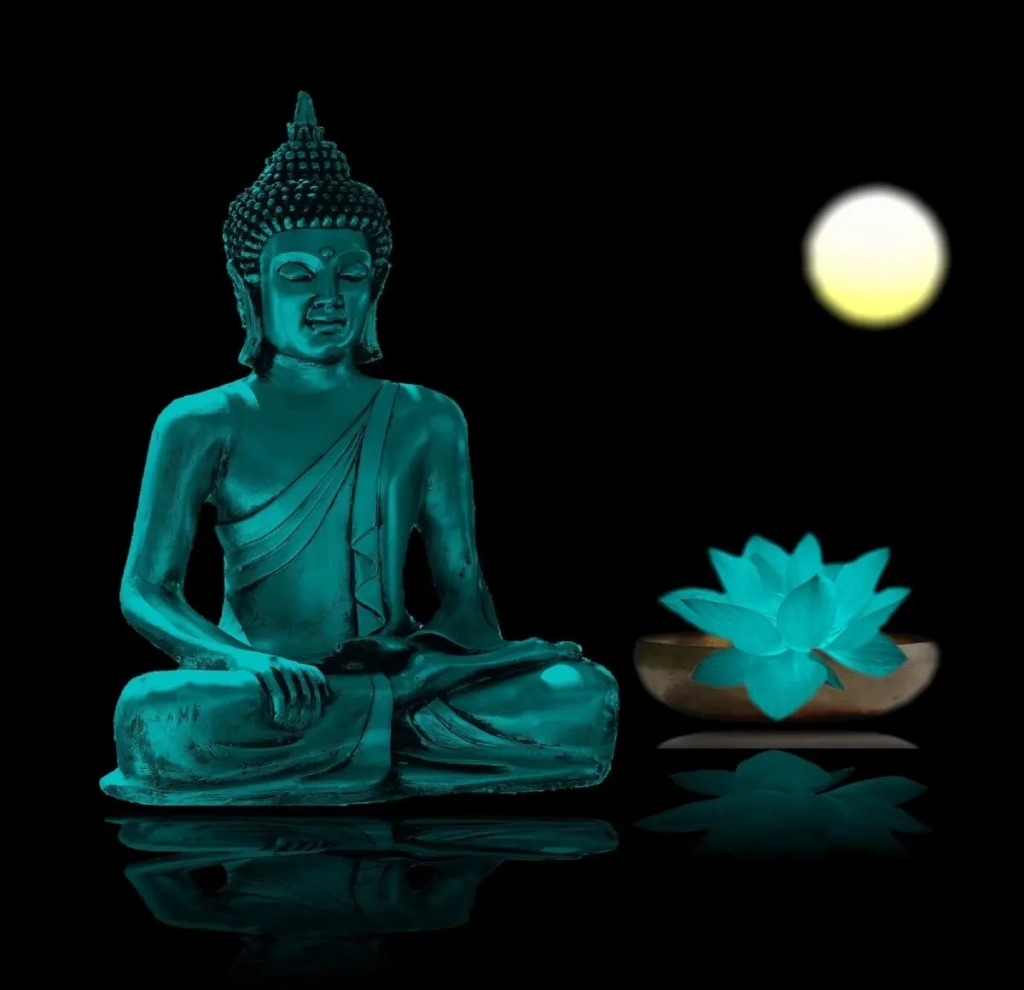
Introduction: The Sacred Significance of Buddha Poornima
Buddha Poornima, or Vesak or Buddha Jayanti, is a religiously important day celebrated to mark the birth, enlightenment (Nirvana), and Mahaparinirvana (death) of Lord Gautam Buddha, the proponent of Buddhism. Feted on the full moon day (Poornima) in the month of Vaishakha (April–May), it is celebrated by Buddhists and spiritual seekers worldwide.
This holy day reminds us of Lord Buddha’s eternal lessons on nonviolence, mindfulness, compassion, and liberation. Special pujas, prayers, meditation sessions, and charitable acts are the hallmarks of celebrating this blessed day in most traditions.
Mythological & Historical Significance
The Life of Siddhartha Gautama
Born as Prince Siddhartha in Lumbini (present-day Nepal), he abandoned the life of luxury to seek truth. After years of rigorous penance and meditation sitting under the Bodhi tree in Bodh Gaya, he achieved enlightenment and was reborn as the Buddha, or “The Awakened One.”
Triveni of Spiritual Events
What is special about Buddha Poornima is that it is believed that three landmark events in the life of Lord Buddha took place on the same day:
- His birth in Lumbini
- His enlightenment under the Bodhi tree
- His Mahaparinirvana in Kushinagar
This conjunction renders the day extremely sacred and spiritually powerful.
Step-by-Step Puja Procedure for Buddha Poornima
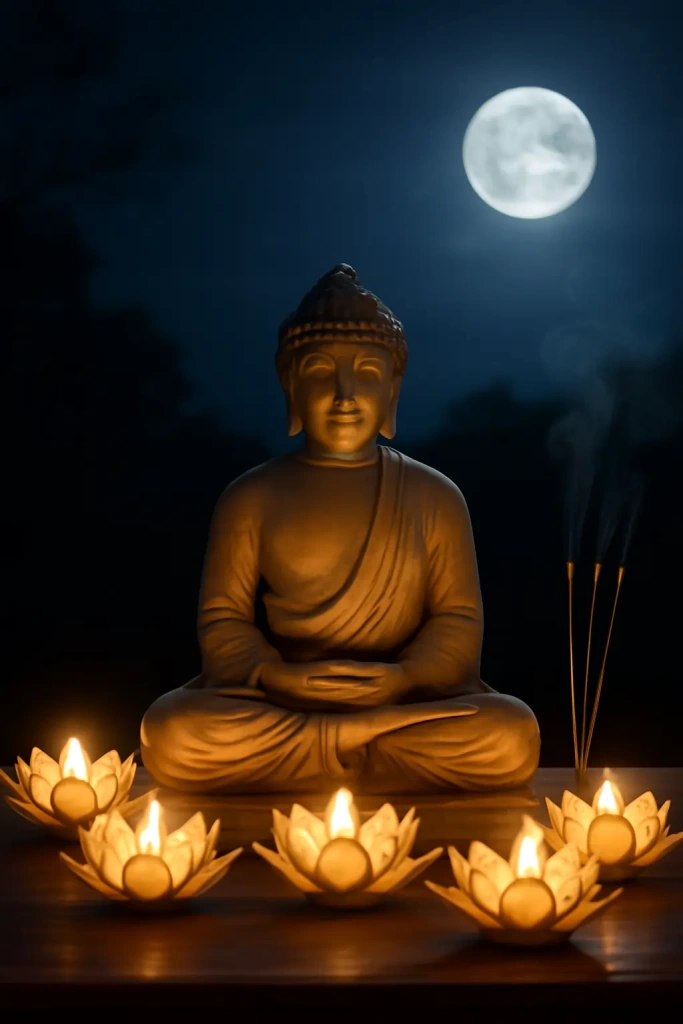
Puja on Buddha Poornima requires inner contemplation, respect, and symbolic oblations. Here’s how to do it step by step:
Step 1: Preparations
- Purify the home and altar area.
- Create a small shrine with a picture or idol of Lord Buddha.
- Light a diya (lamp) or candles.
- Place offerings: incense, flowers, water, fruits, and rice.
Step 2: Invocation & Sankalpa
Sit calmly and mentally call upon the Triple Gem:
1. Buddha – the Enlightened One
2. Dharma – the Teachings
3. Sangha – the Community of the seekers
Recite a spiritual vow (sankalpa) to mark the day with awareness.
Step 3: Main Ritual
1. Place incense, water, and flowers in front of the Buddha image.
2. Recite Buddhist mantras like:
“Buddham Sharanam Gachchhami, Dhammam Sharanam Gachchhami, Sangham Sharanam Gachchhami”
3. Read Dhammapada verses or the Bodhisattva Vow.
4. Sit silently in meditation for 10–30 minutes on compassion.
5. Read from Buddhist scriptures like the Jataka Tales or Sutras.
Step 4: Bhiksha and Charity
- Prepare a simple sattvik meal.
- Provide food to monks or the poor as an act of dana (charity).
Benefits of Buddha Poornima Puja
- Inspires the path of mindfulness and right living
- Fosters inner peace and emotional balance
- Encourages compassion, humility, and generosity
- Breaks cycles of attachment and ignorance
- Fosters community bonding through acts of service
- Awakens the seeker’s path to nirvana (liberation)
Dos and Don’ts
Do’s:
- Practice ahimsa (nonviolence) in thought, word, and action.
- Meditate and practice mindful breathing.
- Read or listen to the teachings of the Buddha.
- Practice acts of seva (selfless service).
- Visit or donate to Buddhist temples or monasteries.
Don’ts:
- Avoid drinking alcohol, meat, or tamasic food.
- Do not practice conflict, gossip, or ill will.
- Refrain from material indulgence and unnecessary distractions.
- Avoid hurting any living creature, even insects.
Is Buddha Poornima Puja Possible Online
Yes! Several international spiritual websites conduct online pujas, live chanting ceremonies, and online retreats in honor of Buddha Poornima.
| Platform | Special Feature |
| SriMandir | Customizable Buddha Jayanti puja with regional traditions |
| AstroTalk | Combining puja with astrological insights and dharma sessions |
| Vipassana.org | Offers guided meditation and online dhamma discourses |
| Bodhgaya. live | Virtual darshan and puja directly from the Bodh Gaya temple |
FAQs
Q1. Do I need to be a Buddhist to celebrate Buddha Poornima
No. The message of Buddha is universal and inclusive.
Q2. Is fasting required on this day
Not obligatory, but many follow a simple, sattvik diet.
Q3. Can I celebrate it at home without a Guru or monk
Yes. It’s a personal day of introspection. You can do rituals at home.
Q4. What’s the ideal time to do the puja
Morning time and full moon night are both favorable.
Q5. Can children and old people join in
Yes, absolutely. It’s a day when the entire family can celebrate peace and learning.
Conclusion: A Day to Walk the Middle Path
Buddha Poornima is not just a festival but a reminder of the path of the enlightened—a way of life lived by compassion, mindfulness, and truth. Conducting Buddha Poornima Puja with devotion leads to profound inner change and global peace.
In celebrating the Buddha, we celebrate the light within ourselves. Through prayer, meditation, or service, this special day opens the door to awakening and self-liberation.
“Be a lamp unto yourself. Take refuge in nothing but the truth.” – Lord Buddha
